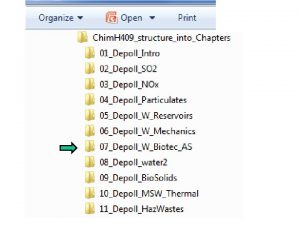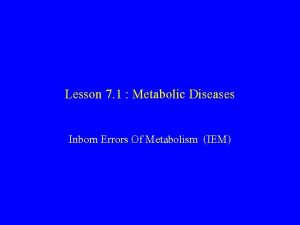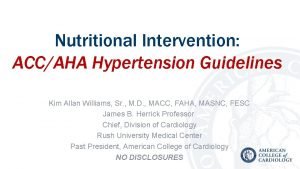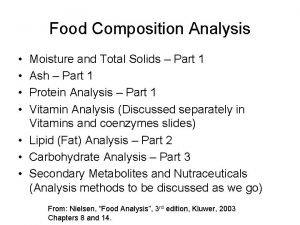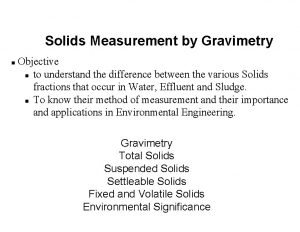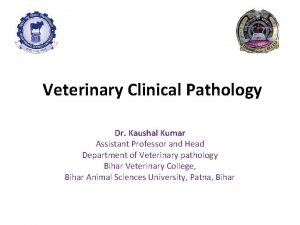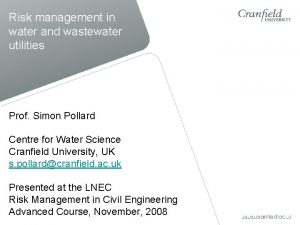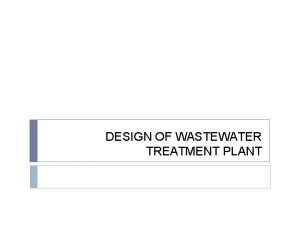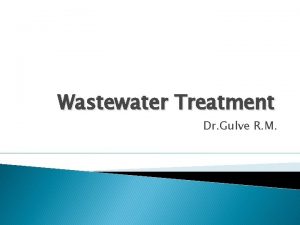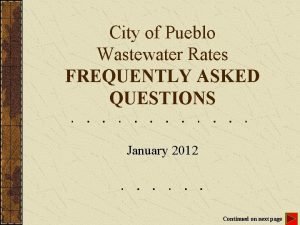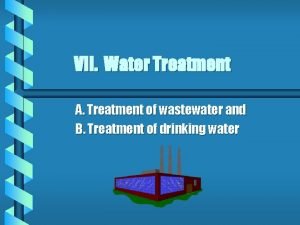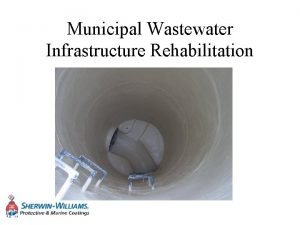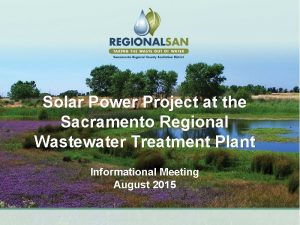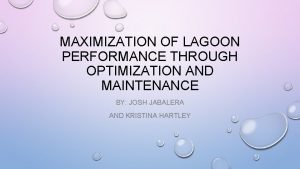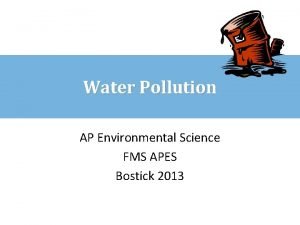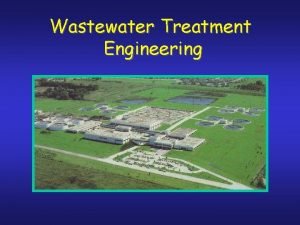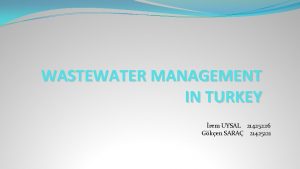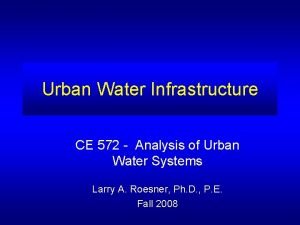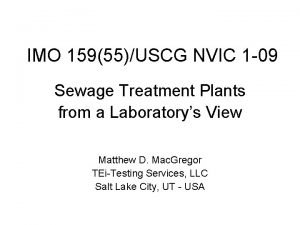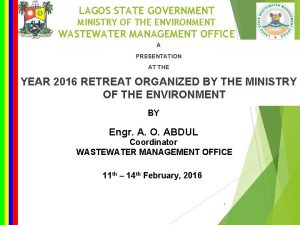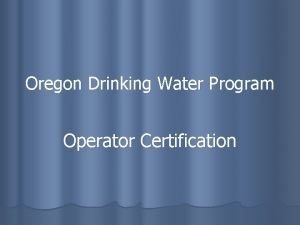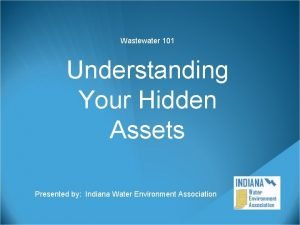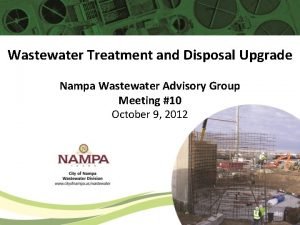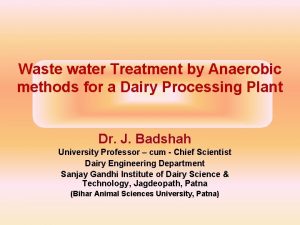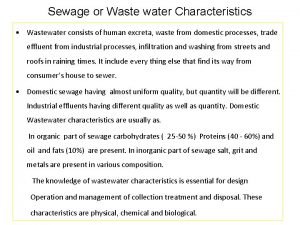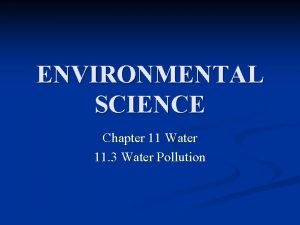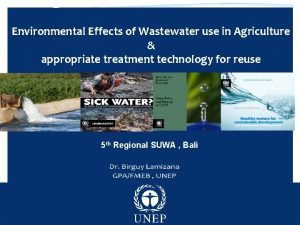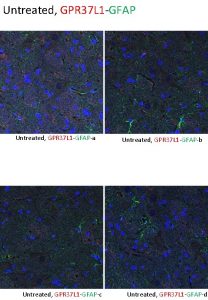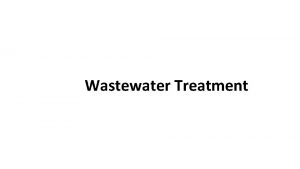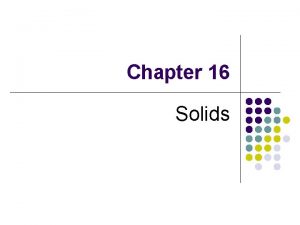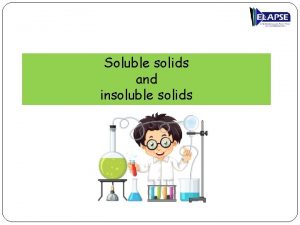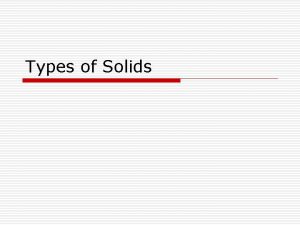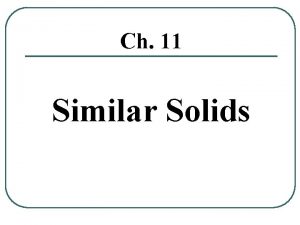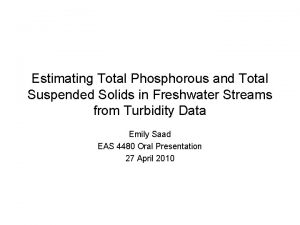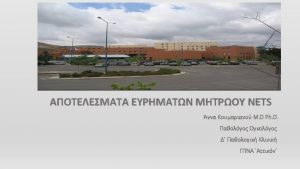Typical composition of untreated domestic wastewater Total Solids



































- Slides: 35




Typical composition of untreated domestic wastewater Total Solids ( 400 – 1200 mg/L) often a function of parasitic clearwater infiltration into the sewers Inorganic (ash) 50% Dissolved inorg. 35% Non-settleable inorganic 40% Organic (volatile) 50% Suspended (>1 µm) 45% (15% inorg) (30% org) Dissolved organic 20% Settleable (“>10µm”) Non-settleable organic 25% (10% inorg ; 35% (15% organic)


Trickling Filter

Activated sludge process

external medium bacteria hydrolysis through exoenzymes waste constitutive organic matter

Submerged aeration pump Surface aerators

Submerged porous diffuser

Decoupling of the agitation / mixing function from the aeration provision

Activated sludge flocs

200 um






Activated sludge model The modeling approach presented here is the classical one, but variants exist. Lawrence, A. W. and Mc. Carty, P. L. (1970) Unified basis for biological treatment design and operation. J. Sanit. Engin. ASCE 96, 757– 778.

We start from the simple case of a chemostat which is a continuous stirred-tank reactor (CSTR). For the moment we do not consider reinjecting the newly produced biomass, back into the bioreactor, after liquid-solid separation. In that case the biomass budget simply reads:

Biomass budget

It can be shown that, in the case with recycling, exactly the same rule applies, but with substitution of the hydraulic residence time, by the cell residence time. The importance of this formula is that it determines the extent of newly produced sludge. One option is thus to play on the negative term (endogenous decay) to try to minimize the amount of biosolids wastes to be disposed (see Table 15. 4)

Based now on the substrate budget, we find if if It shows that the only two (professional) ways to operate an activated sludge plant are to base on maintaining, either a constant MLSS, or a constant sludge age. This is the so-called Walker rule.


Food-to-Microbe ratio kg BOD 5/kg MLSS. d




Sludge Volume Index, SVI = (volume of sludge after 30 min. settling, ml) x 1000 mg/L suspended solids A mixed liquor has 4000 mg/L suspended solids. After 30 minutes of settling in a 1 L cylinder, the sludge occupied 400 ml. SVI = (400 x 1000)/ 4000 = 100 Good settling if SVI < 100, if SVI > 200 …. problems

Bulking sludge, excessive development of filamentous bacteria, poor settleability of the flocs.

If residence time is excessive (> 2 hr) the risk in secondary clarifier is that denitrification takes place, generating N 2 microbubbles which can float sludge flocs. What we obviously want to avoid is sludge loss into the receiving water body we actually wanted to protect in the first place. On site, however, this problem should be differentiated from the bulking one (due to proliferation of filamentous bacteria).


To reach good nitrification rates, it is necessary to work at a low F/M ratio. The biomass concentration thus needs to be higher than in the conventional process. These requirements have consequences regarding the subsequent sludge manipulation options and disposal routes.

submerged membrane modules (Kubota ®) 0. 4 µm porosity allows improved separation of newly produced biosolids from final treated effluent (even if activated sludge flocs have a poor settling behaviour, chronic or episodic)

Recent evolution of biological wastewater treatment processes - 1925 - 2010 Anammox (ANaerobic AMMonium OXidation)
 Typical composition of untreated domestic wastewater
Typical composition of untreated domestic wastewater Untreated pku
Untreated pku Biorad
Biorad Treated vs untreated
Treated vs untreated Soil lab apes
Soil lab apes Moisture and total solids analysis
Moisture and total solids analysis Total solids calculation formula
Total solids calculation formula Wintrobe and westergren tube difference
Wintrobe and westergren tube difference Wastewater infrastructure design in texas
Wastewater infrastructure design in texas Risk management for water and wastewater utilities
Risk management for water and wastewater utilities Wastewater 101
Wastewater 101 Clarifier tank in wastewater treatment
Clarifier tank in wastewater treatment Municipal wastewater treatment
Municipal wastewater treatment Pueblo wastewater
Pueblo wastewater Wastewater treatment process primary secondary tertiary
Wastewater treatment process primary secondary tertiary Sherwin williams mortar
Sherwin williams mortar Wastewater treatment for dairy industry
Wastewater treatment for dairy industry Sacramento regional wastewater treatment plant
Sacramento regional wastewater treatment plant Ashbridges bay treatment plant
Ashbridges bay treatment plant Optimize wastewater lagoon
Optimize wastewater lagoon Anaerobic methane digester frq
Anaerobic methane digester frq Secondary wastewater treatment
Secondary wastewater treatment Agricultural wastewater treatment technologies
Agricultural wastewater treatment technologies Wastewater distribution system
Wastewater distribution system Conclusion of wastewater treatment ppt
Conclusion of wastewater treatment ppt Lagos state wastewater management office
Lagos state wastewater management office Oregon drinking water certification
Oregon drinking water certification Wastewater 101
Wastewater 101 Nitrogen supplement for plants
Nitrogen supplement for plants Nampa wastewater treatment plant
Nampa wastewater treatment plant Purpose of wastewater treatment
Purpose of wastewater treatment Anaerobic wastewater treatment
Anaerobic wastewater treatment Characteristics of sewage
Characteristics of sewage Wastewater sludge
Wastewater sludge Agricultural wastewater treatment technologies
Agricultural wastewater treatment technologies Peak flow average
Peak flow average
